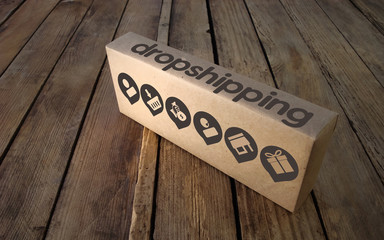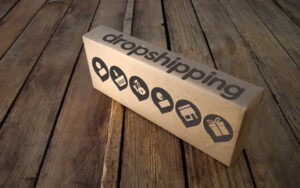House of Aesthetix gives the vitamins and minerals your skin craves. They are also better for the environment so that you can feel good about your beauty routine.

But the word “natural” on a label isn’t regulated, and some of these ingredients can cause allergic reactions. Here are some tips to help you find the right natural products for your skin.
Regarding clean beauty, many think of strictly plant-based ingredients, eco-conscious companies prioritizing sustainability, or “free-from” labels promising no sulfates, parabens, phthalates, and other questionable chemicals. But those aren’t the only things to remember when shopping for natural skin care.
Even when choosing products labeled as natural, green, or clean, there are no strict guidelines for what that means. For instance, the FDA does not have a regulated definition for “natural.” So, a product might contain dangerous chemicals—such as phthalates and parabens—and still be considered a natural skincare item.
Choose clean beauty products made with organically farmed ingredients to avoid these potentially harmful elements. The best clean beauty brands will be transparent about where their ingredients come from and how they are processed and manufactured.
All-natural skincare brands typically use small batch production to control every element that goes into their products. This way, they can ensure that the products are safe and effective for their customers. In addition, many of these brands were founded by students or graduates of aromatherapy or herbalism, so they know all about the different plants and herbs that make up their formulas.
All-natural skin care can help prevent breakouts, soothe sensitive skin and reduce inflammation. It can also improve the appearance of your skin over time. However, the results you see may vary from person to person. Some might notice an improvement in their complexion right away, while others might need to use the products for several months before seeing a difference. The key is to stick with your routine and stay consistent so your skin will begin to thrive.
If you have sensitive skin, choosing natural beauty products that don’t contain harmful ingredients is crucial. This includes natural cleansers, tonics, serums, moisturizers, and makeup, like foundations and lipsticks. Look for natural skincare brands formulated with nourishing and healing plant-based ingredients and certified organic by trusted third-party agencies.
A good natural skin care regimen will help protect against environmental toxins and keep your skin healthy, glowing, and happy. It’s also a great way to help support the environment by choosing eco-friendly products free of chemicals, plastic packaging, and synthetic fragrances.
While it’s easy to find products marketed as natural, the FDA does not have any legal definition for “natural.” Instead of just a marketing term, think of “natural” as a product that contains no harmful or toxic chemicals, such as sulfates, parabens, phthalates, and synthetic fragrances.
Fortunately, there is a plethora of amazing, clean beauty products that deserve permanent spots in anyone’s routine. With various natural ingredients, many of which are already found in the kitchen pantry, it’s easier to switch to more natural products.
The best way to get started is by replacing your current cleanser with a gentle, non-toxic one. The first few weeks of using a new product may be a bit more sensitive for some people, but that’s because your body is getting used to the different ingredients. After a few weeks, your skin should adjust and start to glow.
If you have sensitive skin, you know how easily irritation and redness can afflict your complexion. Sensitive skin can be genetically predisposed when a new product or ingredient upsets the skin barrier, causing stinging, itching, and tightness. Many natural products are formulated to soothe sensitive complexions and help restore a healthy, hydrated look.
When choosing a natural skincare routine for dry or sensitive skin, be sure to look for the words “sensitive,” “gentle,” and “balanced.” Avoid fragrances, harsh chemicals, and ingredients that can trigger a reaction like contact dermatitis. These include sulfates, formaldehyde-releasing preservatives, mineral oil, and chemical dyes. Also, be careful about abrasive exfoliants and harsh peeling masks. These are likely to strip the skin and cause further irritation.
To soothe the skin and prevent breakouts, try a non-toxic cleanser to help restore the skin barrier and remove makeup without drying out the complexion. A gentle facial oil infused with jojoba, hibiscus, or shea will help to nourish and moisturize the skin. Also, use a soothing skin mask that contains delicate herbs and nutrients to calm inflammation and irritation.
For an extra layer of protection, use a hydrating moisturizer with botanical ceramides to strengthen the skin barrier. For exfoliation, choose a gentle scrub with oats or sugar granules to gently buff away dead cells without irritating the skin. If you have a skin condition like rosacea or eczema, use a natural cream with exfoliating properties to reduce flakiness and restore the skin barrier. Also, look for a calming hydrosol toner such as Mokosh Pure Hydrosol that will add a soothing layer of hydration and balance the skin pH often disrupted by other toners.
Natural products don’t typically contain any of the synthetic chemicals that are linked to a variety of health problems. Instead, they are made from safe ingredients for the skin and environment.
But be careful: Not all natural skin care is created equal. “Natural” is a vague term, unregulated by the FDA, and can mean anything from organic to cruelty-free, says Driver. Some brands use the word as a marketing gimmick, and it’s important to read ingredient lists carefully to avoid greenwashing.
“The biggest issue is that some ‘natural’ ingredients can still irritate,” says Dr. Garshick. For example, plants that grow in the wild may contain essential oils that can trigger reactions like poison ivy. Or, certain preservatives such as DMDM hydantoin, imidazolidinyl urea, quaternion-15, and polyoxymethylene urea (also known as PEG compounds) can release formaldehyde in the skin, which is a carcinogen. Or, triclosan, often found in antibacterial products, can contribute to the rise of antibiotic-resistant bacteria.
For the best natural products, look for certified organic, sustainably sourced, and free of synthetic additives, she says. Avoid anything with a long ingredient list or perfumes, as both can trigger irritation.
A great option is Alba Botanica, which offers plant-powered products that are clean and effective. Its bestselling products include the Bakuchiol Booster Everyday Facial Oil and Mega Mist Hyaluronic Acid Face Spray. The brand is also committed to sustainability and has won several green beauty awards. Its reusable packaging and plastic-free containers make it an excellent choice for the eco-conscious consumer.
Aside from being safer for your skin, natural skin care products are also great for the environment. This is because they typically contain fewer chemicals that are bad for the planet, as well as ingredients that are sustainably sourced. They are often also packaged in recycled or biodegradable materials. Additionally, many clean beauty brands are eco-conscious in their manufacturing process and work towards zero waste initiatives.
For example, Kora Organics is a popular clean beauty brand that offers high-performance, organic, plant-based products. Their facial serums, moisturizers, and face masks are formulated with organic noni fruit extract, aloe leaf juice, and other natural ingredients. They’re free of harsh chemicals, are cruelty-free, and have a zero-waste mission.
Another great option is One Ocean Beauty. Their marine skincare products are sustainably sourced through blue biotechnology, which preserves the natural resources and biodiversity of the ocean. They’re free of phthalates, parabens, sodium lauryl sulfate, synthetic fragrance, and GMOs and are Leaping Bunny certified cruelty-free. They’re also vegan, and their packaging is made from recyclable and post-consumer recycled material.
While some clean beauty products may be expensive, many are more affordable than traditional drugstore products. Additionally, many of these brands offer subscription services to help you save even more money and avoid waste.
Whether you switch your routine to clean beauty or replace some of your current products, these brands are great choices. Check out their clean beauty products, from rose water toner to pumpkin face masks. You can also find other eco-friendly and low-waste products from these brands, such as body scrubs, facial soap bars, and more!



 A dropship operation can start up faster. It doesn’t require a warehouse or inventory, and you don’t have to hire additional employees. Furthermore, dropshipping businesses are easy to scale. You don’t have to pick and pack products yourself, and your suppliers will take care of that. This way, you can scale your business without putting extra effort into it. And because dropshipping suppliers pick and pack your products, you can focus more on marketing and growing your business.
A dropship operation can start up faster. It doesn’t require a warehouse or inventory, and you don’t have to hire additional employees. Furthermore, dropshipping businesses are easy to scale. You don’t have to pick and pack products yourself, and your suppliers will take care of that. This way, you can scale your business without putting extra effort into it. And because dropshipping suppliers pick and pack your products, you can focus more on marketing and growing your business.